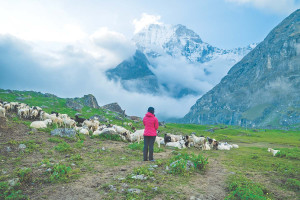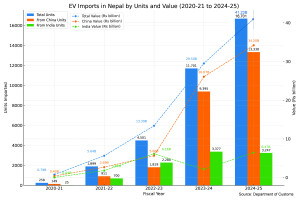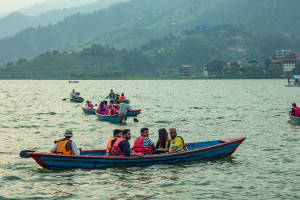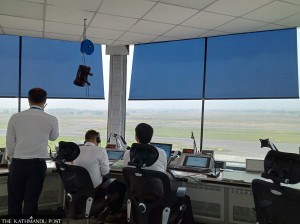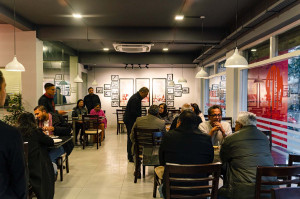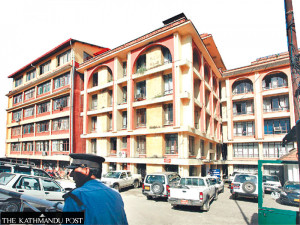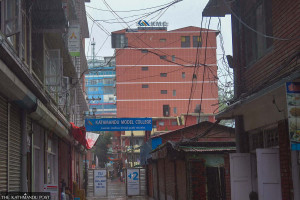Money
Two-wheelers rule Nepal’s roads
The two-wheeler segment posted record sales despite the hard times brought about by the earthquake and transit blockade in the last fiscal year. Motorcycles and scooters have become a basic requirement for mobility in the country due to its poor public transportation infrastructure.-copy.jpg&w=900&height=601)
Sangam Prasain
The two-wheeler segment posted record sales despite the hard times brought about by the earthquake and transit blockade in the last fiscal year. Motorcycles and scooters have become a basic requirement for mobility in the country due to its poor public transportation infrastructure.
According to Department of Transport Management statistics, the registration of two-wheelers nationwide jumped by a whopping 36.18 percent in the last fiscal year.
Although imports were severely affected by last year’s devastating earthquake followed by months-long Tarai unrest, the figure indicates that the trials did not dampen the customer’s thirst for two-wheelers. A total of 267,439 motorcycles and scooters were registered in the country in 2015-16, up from 196,383 in 2014-15.
“Despite all the odds, the last fiscal year was an extraordinary year for the two-wheeler segment,” said Shekhar Golchha, immediate past president of the Nepal Automobile Dealers’ Association (Nada). “The growth will spill over into this year as well.”
Though the country’s economy greatly suffered last year, the auto sector’s growth was exceptional. Last year’s trade embargo created a parallel economy—based on black marketeering—and its trickledown effect was directly visible in the auto industry, with people buying two wheelers with their earnings. “Definitely, this fact is not worth dismissing,” Golchha said, “The trade embargo also led to greater access to market liquidity. People were offered loans at lower interest rates to buy two-wheelers.”
Besides these, two new market phenomenon—rising rural income and expansion of road networks across the country—are other contributing factors that have driven two-wheeler sales upward.
But most all, Nepal’s burgeoning middle-class, whose first vehicle is invariably a two-wheeler, remains the key driver for the market. The amount of remittance sent by Nepali migrant workers which has been on the upswing of late is also a contributor. People, particularly in rural areas, now have larger disposable incomes, and a part of that is spent on consumer durables—where two-wheelers feature as a top option—said Golchha.
“The bike replacement rate in Nepal is normally two years and it is also one of the factors that push the sales,” said Golchha, who is also the executive director of Hansraj Hulaschand and Company, the authorised distributor of Bajaj bikes in Nepal.
The two-wheelers registration figure touched the six figure mark for the first time in 2009-10, jumping 102 percent against 2008-09. During this time, sales were backed by the real estate market boom. However, it dropped 18 percent to 138,907 in 2010-11 and picked up to 145,135 and 175,381 in 2011-12 and 2012-13 respectively. In 2013-14, the registration again dropped to 163,945. Since then, it has been growing at a healthy rate.
Dealers are predicting a double-digit market growth in the current fiscal year as well, given that the country’s economic environment remains positive.
With last year’s phenomenal sales, the two-wheeler segment is now gearing for the festive extravaganza—October-November—traditionally a big buying period. Most companies plan to unveil more models at the upcoming Nada Auto Show.
“The two-wheelers or auto sales in Nepal depend on the economic environment,” said Abheek Jyoti, chairman of Nepal General Marketing (NGM), authorised distributor of Hero two-wheelers in Nepal.
Last year’s earthquakes and trade embargo that lasted until February, had completely affected the business. “But since March, we have observed a double-digit growth,” he said. “If there is no disturbance, we are expecting the same growth this fiscal year too.”
Jyoti said that two-wheelers sales growths are driven particularly by the expansion of road networks. Lately, market has been robustly shifting outside the Kathmandu Valley as well.
Traditionally, Bagmati zone, where the Kathmandu Valley is situated, is the largest market for motor vehicles in Nepal. But now, the number of motorcycles and scooters registered in Lumbini, Narayani and Koshi zones is nearing the figures of Bagmati’s registrations.
Bagmati zone saw the registration of 64,927 motorcycles and scooters this fiscal year followed by Lumbini with 56,793, Narayani with 48,196 and Koshi with 42,429 two-wheelers.




 21.02°C Kathmandu
21.02°C Kathmandu







